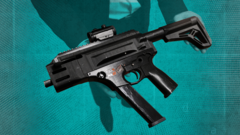Are 3D-Printed Guns Taking Over the Internet?

Understanding the Rise of 3D-Printed Guns and Their Implications
As technology continues to evolve, so do the tools available for both legal and illegal activities. One of the most concerning advancements in recent years is the rise of 3D-printed guns. These firearms have emerged as a significant threat, especially in the hands of criminals and violent extremists. In this article, we will delve into the mechanics of 3D-printed guns, explore their implications for society, and discuss the ongoing debates surrounding their regulation and control.
The Mechanics of 3D-Printed Guns
3D-printed guns are firearms created using 3D printing technology. This innovative method allows individuals to manufacture guns at home by utilizing downloadable blueprints and a 3D printer. Unlike traditional firearms, many of these guns are constructed using plastic components, which makes them difficult to trace and regulate. The ease of access to both the technology and the blueprints has made them increasingly popular among those seeking to evade gun control laws.
The Evolution of 3D Printing Technology
In the last decade, advancements in 3D printing technology have led to the creation of more sophisticated and reliable firearms. Modern 3D-printed guns can fire multiple rounds without the plastic components failing, making them more effective for those with malicious intent. The rapid development of materials used in 3D printing has allowed for greater durability and functionality in these weapons.
Types of 3D-Printed Guns
There are several types of 3D-printed guns, each designed for specific purposes:
- The Liberator: Designed in 2013, this was the first widely available 3D-printed gun. It is a single-shot pistol that can be easily assembled using a 3D printer.
- FGC-9: This model is designed to be printed entirely from plastic with minimal metal parts. It represents a step towards creating fully functional firearms without the need for commercially available gun components.
- Glock Switch: A small part that can convert semi-automatic pistols into automatic weapons, making them significantly more dangerous.
The Criminal Landscape
3D-printed guns are increasingly being found at crime scenes, raising alarms among law enforcement agencies and gun control advocates. The untraceable nature of these weapons makes them appealing to criminals and violent extremists. The accessibility of blueprints over the internet and social media platforms has further exacerbated this issue.
The Role of Social Media and Online Communities
Platforms like Telegram, Facebook, and Instagram have become hubs for the trade of 3D-printed guns and their blueprints. Advertisements for these firearms often violate the policies of these platforms yet continue to proliferate. For instance, in a recent investigation, it was found that numerous gun ads appeared on Meta's platforms, including those for 3D-printed weapons.
The ease with which individuals can access these blueprints has led to a surge in the DIY gunsmith movement. Many users believe that they can circumvent laws by creating their own firearms at home. This not only poses risks to public safety but also challenges law enforcement's ability to monitor and control the proliferation of firearms.
Legal and Regulatory Challenges
The rise of 3D-printed guns has prompted calls for stricter regulations on both the possession of blueprints and the manufacturing of these firearms. Various countries are considering laws to criminalize the distribution of 3D-printed gun blueprints. However, enforcing such regulations poses significant challenges.
Challenges in Regulation
- Global Accessibility: The internet allows for the rapid spread of information, making it difficult for individual countries to contain the distribution of blueprints.
- Technological Advancements: As 3D printing technology evolves, it becomes harder to regulate the materials and methods used to create firearms.
- DIY Culture: The allure of DIY gunsmithing attracts individuals who may not have access to traditional firearms, complicating the regulatory landscape.
The Debate on Gun Rights and Safety
The rise of 3D-printed guns has ignited intense debates regarding gun rights and public safety. Proponents of 3D-printed guns often argue for the right to bear arms, citing the Second Amendment in the United States as a fundamental human right. They believe that access to information and technology should not be restricted, regardless of the potential for misuse.
Opposing Perspectives
Conversely, gun control advocates argue that the unregulated distribution of blueprints and the ease of access to 3D-printed guns pose significant risks to public safety. They emphasize the need for comprehensive regulations to prevent these weapons from falling into the wrong hands. The tragic incidents involving 3D-printed guns serve as sobering reminders of the potential consequences of unregulated firearm access.
The Case of Myanmar
One notable example of 3D-printed guns being utilized in a military conflict is in Myanmar. Resistance fighters have reportedly used models like the FGC-9 against the ruling junta. This situation highlights both the potential benefits and limitations of 3D-printed firearms in real-world scenarios.
Current Usage and Limitations
Despite initial enthusiasm, many resistance groups in Myanmar have shifted away from using 3D-printed guns. The challenges of sourcing essential materials and the availability of more conventional weapons have led to a decline in their use. This example illustrates that while 3D-printed guns can serve a purpose in certain contexts, they are not a panacea for armed conflict.
The Future of 3D-Printed Guns
The future of 3D-printed guns remains uncertain. As technology continues to advance, so will the methods employed by individuals seeking to exploit it. The ongoing debate around regulation and access will likely shape the landscape of 3D-printed firearms in the coming years.
Potential Regulatory Measures
Some proposed measures to address the issue of 3D-printed guns include:
- Implementing stricter laws against the distribution of blueprints for 3D-printed firearms.
- Encouraging 3D printer manufacturers to incorporate restrictions that prevent the printing of gun components.
- Increasing awareness and education about the risks associated with 3D-printed guns.
Conclusion
The rise of 3D-printed guns represents a complex intersection of technology, criminality, and regulation. As this phenomenon continues to evolve, it is crucial for lawmakers, law enforcement, and communities to engage in proactive discussions about the implications of this technology. Balancing the rights to bear arms with the need for public safety will remain a significant challenge in the years to come.
As we navigate this new frontier, it raises a critical question: How can society effectively manage the risks associated with 3D-printed guns while respecting individual rights? The conversation is just beginning, and the stakes have never been higher.
Frequently Asked Questions (FAQs)
What are 3D-printed guns?
3D-printed guns are firearms created using 3D printing technology, which allows individuals to manufacture guns at home using downloadable blueprints and a 3D printer.
Are 3D-printed guns legal?
The legality of 3D-printed guns varies by country and region. In many places, creating and possessing these firearms is subject to gun control laws, while in others, there may be little regulation.
How are 3D-printed guns being used in crime?
3D-printed guns have been found at crime scenes, making them appealing to criminals due to their untraceable nature and the ease of access to blueprints and 3D printing technology.
What measures are being proposed to regulate 3D-printed guns?
Proposed measures include stricter laws against the distribution of blueprints, encouraging 3D printer manufacturers to implement restrictions, and increasing awareness about the risks associated with 3D-printed firearms.
Can 3D-printed guns be made entirely from plastic?
Yes, some models like the FGC-9 are designed to be printed primarily from plastic, with minimal metal components required, making them easier to manufacture and conceal.
As the conversation surrounding 3D-printed guns continues to unfold, it is essential for individuals, communities, and policymakers to remain vigilant and engaged. The implications of this technology are vast and could shape the future of firearms and public safety. What steps do you think should be taken to address the challenges posed by 3D-printed guns? #3DPrintedGuns #GunControl #PublicSafety
Published: 2025-06-19 01:38:14 | Category: technology



